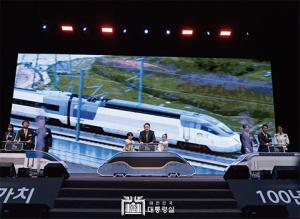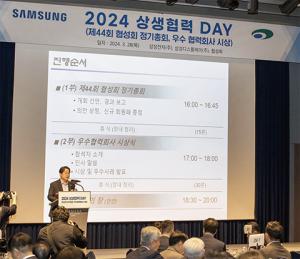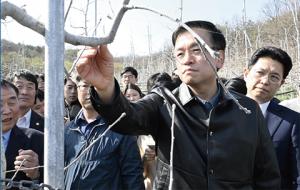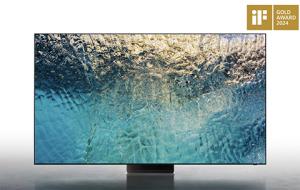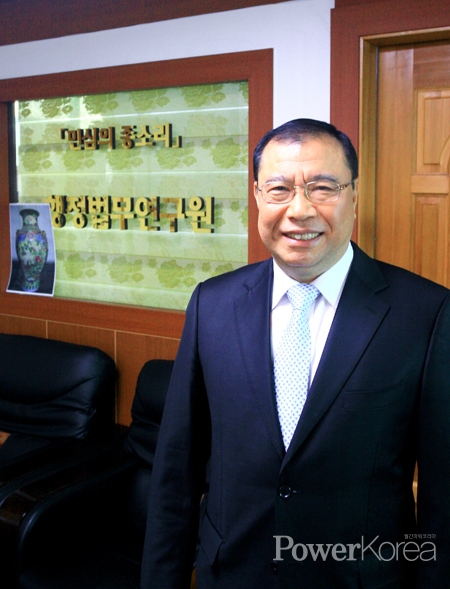 |
| ▲ 행정법무연구원 민종기 원장/ 前 화순부군수 |
세계적 명품 데이비드 화병 발굴 계기로 고미술품 박물관 존재가치를 묻다
“지금이 바로 박물관과 연계한 체계적인 도자기 연구로 문화 강국의 초석 다질 시점”
행정법무연구원 민종기 원장/ 前 화순부군수
최근 분청사기의 명소 두원면에서 내년 완공 예정인 전남 고흥분청사기박물관에 대한 관심이 뜨겁다. 이를 계기로 수십 년 간 중국의 진귀한 도자기를 비롯한 역사적 유물들을 전문적으로 수집해온 전 화순부군수이자 행정법무연구원 민종기 원장이 고흥군에 임시 기탁한 데이비드 화병을 비롯한 4천 여 점의 진품 유물들 역시 꾸준히 관심을 모으고 있다. 고미술품 박물관 건립이 어떤 역사적 가치를 지녔으며 해외 유출문화재가 다수인 우리 문화계가 어떻게 대응해야 할지, 전문 고미술품 수집 연구가인 민 원장의 안목으로 그 현황과 대안을 정리해 본다.
문화유물을 통한 연구, 등가교환의 중요성 알리는 박물관의 존재가치
대영박물관의 상징 데이비드 화병의 쌍둥이 화병을 발굴하며 국내의 가장 권위 있는 고미술품 전문수집가로 평가받는 광주 행정법무연구원 민종기 원장, 그는 지난 36년 간 전남도청에서 시작해 전남도의회 의정지원관, 전남 행정심판위원회에 재직하며 도시개발과 문화재 업무를 수행한 이래 국내외 수많은 고미술품들의 역사적 가치를 입증해 왔다. 민 원장은 내년 완공될 전남의 고흥분청사기박물관 건립과 관련해, 자신이 수집한 중국 고대 도자기들을 포함한 수많은 고미술품들이 존재가치를 드러내기를 고대해 왔음을 알렸다. 국내의 역사가 담긴 조선시대 고문서를 비롯하여, 시야를 중국유물로 넓힌 후로는 당대에서 청대에 이르기까지 수많은 도자기, 흑피옥, 춘추전국시대칠기, 고대황실먹, 자사호, 고서화를 비롯해 민 원장의 수집 스펙트럼은 다양하다. 그 중에서도 중국인민대학박물관 학회이사 허명 교수, 상해 공뢰관리전문학원 문물감정학과 진일민 교수로부터 진품 인증을 받은 1천 억 원 이상의 가치로 추정되는 원청화 도자를 찾아 낸 민 원장은 수집을 초월해 유물의 역사적 의의를 발굴하는 역할에 충실해 왔다. 특히 유명 중국감정위원으로부터 국보감으로 판정받은 송나라 불두 도자기와 동림연사 황실먹이 진품 판정을 받은 것을 계기로 더 본격적인 진품 감정평가를 받기 시작한 민 원장은 수많은 고미술품 수집가들로부터 받은 판매 제안들을 거절하고 박물관에 기증하거나 해외의 우리 유물과 등가교환을 하겠다는 각오를 보이고 있다. 우리 유물 50여 만 점이 해외로 유출되어 그 중 17만 여 점의 위치가 확인되고 있지만, 우리의 소불상 동조여래입상이 오히려 일본 측에 송환되는 등 안타까운 사태들을 보다 못한 민 원장은 중국 도자기들을 통해, 우리의 유물의 가치를 인정받고자 하는 강수를 둔 것이다. 국내에 도자기 박물관이 건립된다는 것은 곧 기증한 문화 유물을 전시할 최적의 장소를 만드는 것이자, 앞으로 유물의 가치를 아는 이들의 기증과 기탁이 이어지기 때문에 가치 있는 일이다. 또한 박물관에 국내외 많은 관광객들이 찾아와 문화 가치를 공유할 수 있으며, 진품 인정에 이어 박물관에서 명성을 얻은 도자기들로 해외 유출 문화재와 등가교환을 한다면 일본, 프랑스처럼 유물 반환을 거부하는 나라들에 위신이 서면서 우리의 권리를 주장할 수 있다는 것이 민 원장의 의견이다.
한중수교와 유물 역사가치 동시에 돈독히 할 도자기 연구에 박차 가해야
민 원장은 그동안 고대 중국 유물 중 도자기 수집에 공들인 이유에 대해, 세계의 정부와 박물관에서 등가교환 및 환수에 필요한 가치를 지닌 유물로는 동서양 통틀어 중국 도자기만한 것이 없다고 전한다. 그래서 그동안 도자기의 감정가를 측정하는데 중국 전문가를 섭외하는 등 각별히 공을 들였던 것이다. 실크로드를 통한 동서양의 교류에서도, 유럽의 귀족과 왕실에서 유니크한 부와 권력을 상징하는 중국 도자기는 보석 이상의 가치를 지닌 명품이었다. 또한 등소평 체제 이래 중국이 자본주의를 받아들이면서 개혁과 개방 이래 수많은 중국 출토유적들이 세계에 진출하게 된다. 이 중 진품으로 판정받은 도자기들은 인류 역사의 상징일 뿐 아니라, 복제할 수 없는 당대의 기술력을 인증 받아 문화, 역사, 학문적 가치도 인정받는다. 그래서 민 원장은 이러한 유물이 고미술품으로 인정받아 가장 먼저 가야 할 곳은 바로 박물관이라고 한다. 박물관에 보관됨으로써 체계적인 중국도자기 연구를 할 수 있으며, 소장한 국가로서 실물을 보고 연구하는 것이 장차 ‘주도권 잡기’에서 훨씬 유리함은 두말할 나위도 없다.
한중고미술협회가 긴밀히 협조해야 하는 이러한 가치 교류는 한국과 중국 간의 문화수교와 관광산업에도 연계되어 장기적으로는 국가발전에 기여하게 되며, 이 과정에서 숨겨진 역사를 발굴해 낼 수도 있는 것이다. 이를 입증하듯 민 원장은 데이비드 화병의 쌍둥이 화병을 발굴함으로써, ‘원대에서 만든 청화자기는 더 이상 없다’는 기존의 가설을 완전히 깨뜨렸을 뿐 아니라 원대의 장인은 의뢰받은 것보다 더 많은 화병을 가마에 넣었을 것이라는 가설을 정설로 만든 사례를 상기시킨다. 세계 6대 수출대국인 한국은 아직 1,2차 산업 외 예술품 분야에서 수출하는 비중이 아직은 적은 편이다. 따라서 민 원장은 고미술품 전문 수집가이자 기증자로서, 이러한 문화유물들의 가치 제고 및 연구에서 한국이 하루빨리 주도권을 잡아야 함을 거듭 강조했다. 영국 대영박물관, 프랑스, 미국, 일본의 유명 박물관에만 있다고 여겨지던 중국 도자기가 한국에서 존재가치를 드러낼 때, 도자기 박물관 건립과 중국 도자기의 가치 인정에서 오는 시너지 효과는 민 원장이 그리는 큰 그림에 버금갈 만큼 무궁무진할 것이다.
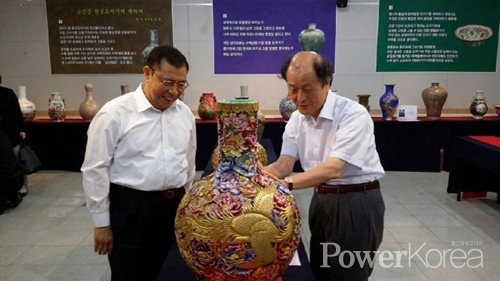 |
Antique museums raise Korea’s cultural status in the world
“It’s right time for Korea to be a cultural powerhouse through in-depth study of ceramics”
Director Min Jeong-ki of Administrative and Legal Affairs Institute and former deputy mayor of Hwasun County
Lately, excitement has been building around Goheung Buncheong Celadon Museum which will soon be opening (Buncheong Celadon: a grayish-blue-powdered celadon). And this also has raised public interest in Min’s collection of 4,000 valuable ceramics. <Power Korea> heard from Min about historical value of antique museums and how to manage Korean cultural assets abroad.
Antique museums promotes exchange of equivalents on cultural assets
Min is one of the most renowned antique collectors in Korea. He has become famous by obtaining one of the twin David Vases; it is the symbol of The British Museum and thought to have existed only one in the world. He worked for Jeollanamdo Provincial Assembly and Jeollanamdo Administrative Judgment Commission in the the urban development and cultural assets departments for 36 years. During this period, he exerted much of his effort in proving the value of both Korean and overseas antiques. Min’s collection covers from documents of the Joseon Dynasty era, ancient Chinese ceramics, heukpi jade, lacquered ware, royal ink stick, jasaho (tea set) to paintings. Won Chung Hwa Ceramic, among the collections, is valued more than KRW 100 billion by Huhmyeong, the professor director of The Museum Society at Renmin University of China, and Jin Il-min, the culture evaluation professor of the Shanghai Gongnae Management Institute. Chinese Buldu Ceramic and Dongrimyeonsa Royal Ink Stick also are evaluated as equal to national treasures. But despite good offers to sell the collections, Min has concrete will to either donate the collections or equivalently exchange them with the Korean cultural assets overseas. 500,000 Korean cultural assets are estimated to be overseas with only 170,000 being identified their location. Opening the antique museum in Korea for Min can mean that he has secured a place to display his donated collections and this will encourage many to follow suit. Not only this, Kim says, it will attract tourists home and abroad alike and can effectively encourage overseas countries, Japan and France in particular, to return back Korean cultural assets in exchange for obtaining some of the Min’s collections in the museum.
In-depth study of ceramics strengthens historical value
of antiques and mutual exchange between Korea and China
The reason Min is obsessed with collecting Chinese ceramics is that the authority in the world prefers them in the case of exchange of equivalents or redemption. Chinese ceramics in fact has been highly sought after collections even in Europe from ancient times as they symbolize power and wealth. Their cultural, historical and academic values as well as technical perfection also have been proved long time ago. And museums, Min says, undoubtedly are the first place that these collections must be housed for systematic research and it will raise cultural power of the nation. In-depth study of ceramics not only strengthens historical value of antiques but also mutual exchange in culture and the subsequent tourism it will involve between Korea and China. Korea in fact has a relatively weak export foundation for cultural products when compared to the products of the first and the second industries. This motivates Min to feel the need for Korea to take the initiative in securing values of world cultural assets and research competency in the field. Chinese ceramics are usually known to be seen in museums of the UK, France, the US and Japan but the fact that Korea also has a museum where people can see valuable Chinese ceramics and antiques will certainly raise Korea’s national status with subsequent synergy effect in the industry, Min emphasizes.
정재헌 기자 jjh05220@naver.com

